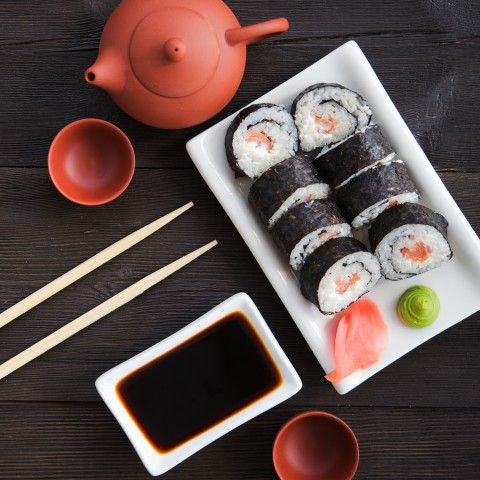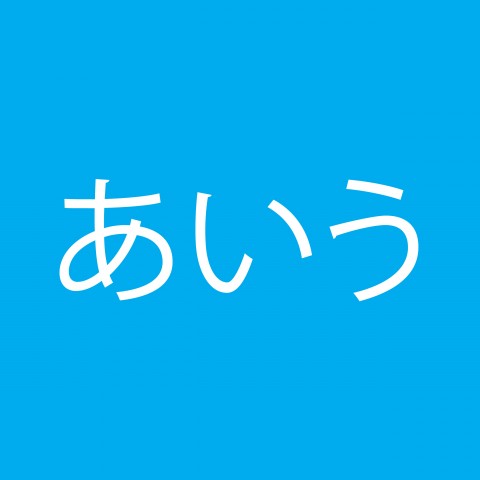
Did you know that the Japanese language does not have a future tense nor any perfect tenses like English does? Japanese tenses are much simpler to handle, as there are only two: the present tense and the past tense. However, there are some unique rules concerning tenses in Japanese that are quite different from what English speakers are used to.
Auxiliary verbs and post positional particles play important roles in the Japanese language, especially in verb conjugations. This is because Japanese tenses are expressed via auxiliary verbs that connect to verbs. So forget about how you form tenses in English (I do, I will do, I did, I have done, I had done, etc.), and learn Japanese tenses with new rules!
In this article, we’ll explain Japanese tenses and cover the following points:
- How Japanese verb conjugations work
- The role of auxiliary verbs
- The present and past tenses
- How to express things about the future in Japanese
By the end of this article from JapanesePod101.com, you’ll be able to grasp the whole picture of Japanese verbs and tenses—in fact, you’ll better understand Japanese grammar in general!

In Japanese, there’s no particular future tense form like the word “will” in English.
 Table of Contents
Table of Contents
- Japanese Tenses Overview
- Present Tense
- Past Tense
- How to Express the Future in Japanese
- How JapanesePod101 Can Help You Learn More Japanese
1. Japanese Tenses Overview
Before we get ahead of ourselves, let’s go over some basic information regarding Japanese verb tenses and forms.
How Many Tenses are There in Japanese?
Japanese has only two verb tenses, which are the present tense and the past tense. The present tense is also used to express things about the future in Japanese, so there’s no clear distinction between the present tense and the future tense.
Having said that, Japanese grammar technically does not treat verbs for tense. Rather, Japanese verbs take one of five basic conjugation forms and are followed by 助動詞 (jodōshi), or auxiliary verbs/post positional particles, in order to express and determine their tense.
Verb Conjugations and Auxiliary Verbs
As mentioned, there are five basic Japanese verb conjugation forms. When verbs conjugate, the verb base (or “stem”) does not change; the stem rather takes on a different suffix or auxiliary verb to convey the proper meaning.
The correct form is determined by elements such as voice, mood, tense, and politeness level.
- Voice
There are two types of grammatical voice:
能動態 (nōdōtai) – “active voice”
受動態 (judōtai) – “passive voice”
- Mood
Mood is the attitude of the speaker toward the action of the verb. Was the speaker giving an order? Making an assumption? Offering a suggestion?
- Tense
Tense refers to the time of the verb’s action: past, present, or future.
- Politeness Level
The Japanese language has honorific speech called 敬語 (keigo). There are three types of honorific language depending on the level of respect intended:
丁寧語 (teinei-go) – “polite language”
尊敬語 (sonkei-go) – “respectful language”
謙譲語 (kenjō-go) – “humble / modest language”
Example: Tense as an Influential Factor
- 食べる (tabe-ru) – “eat” [present and plain/informal form]
食べ (tabe-) is the verb stem and る (ru) is the suffix.
- 食べた (tabe-ta) – “ate” [past and informal form]
食べ (tabe-) is the verb stem and た (-ta) is an auxiliary verb that expresses the past form.
To learn more details about Japanese verbs and verb conjugations, please see our articles 100+ Most Common Japanese Verbs and Ultimate Japanese Verb Conjugation Guide.

Tenses are expressed by the post positional particles or auxiliary verbs that connect to the verbs:
寿司を食べる /食べた。
Sushi o tabe-ru / tabe-ta.
([I] eat / ate Sushi.)
Formal and Informal Forms
As mentioned in the previous section, there are three Japanese honorific speech levels. Native Japanese people, especially in official settings, are expected to have total command over the three different levels so they can use them according to the situation and to whom they’re talking. However, you won’t experience any problems as a foreigner, as long as you can use polite language in daily conversations.
The polite language usually ends with です(-desu) or ます (-masu) in the present/future tense, and でした (-deshita) or ました (-mashita) in the past tense.
The polite language is generally used as a formal form, and casual/plain language is used as an informal form. While the latter is used for talking with family and friends, most people use the former when talking to strangers or staff members at a store or restaurant.
Example:
歩く(あるく) (aru-ku) – “to walk”
- ある (aru-) = verb stem
- 歩く (あるく) (aru-ku) = informal/plain form
- 歩きます (あるきます) (aru-kimasu) = formal/polite form

Each Japanese tense has a formal form (honorific) and an informal form:
列車が到着します、ご注意ください。
Ressha ga tōchaku shimasu, go-chūi kudasai.
(The train is coming, please be careful.) [formal and polite form]
2. Present Tense
The Japanese present tense is used to talk about things that are happening now, recurring actions, and events set to happen in the future.
Present Tense
Japanese verbs in their informal form always end in -u or -ru. These suffixes correspond to the syllables found in the う段 (u-dan) or “U row” of the Hiragana table.
Japanese verbs in their formal or polite form end with an い段 (i-dan) or え段 (e-dan) syllable followed by ます (-masu): -imasu or -emasu.
Examples [Informal / Formal]
飲む・のむ (no-mu) – “drink”
[ の (no-) is the verb stem ]
- ➢ 私は水を飲む / 飲みます。
Watashi wa mizu o nomu / nomimasu.
I drink water.
付ける・つける (hira-ku) – “turn on”
[ つけ (tsuke-) is the verb stem ]
- ➢ 寒いので暖房をつける / つけます。
Samui node danbō o tsukeru / tsukemasu.
I turn on a heater because it’s cold.
開く・ひらく (hira-ku) – “open”
[ ひら (hira-) is the verb stem ]
- ➢ お店は午前9時に開く / 開きます。
O-mise wa gozen ku-ji ni hiraku / hirakimasu.
The store opens at 9:00 a.m.
Present Progressive Tense
The present progressive tense is used when expressing a continuous action or things that are happening now.
This tense is formed by adding -て いる (-te iru) for informal verbs or -て います (-te imasu) for formal verbs that conjugate in the te-form. Below is a quick description of how to conjugate in the te-form for different verb types.
For u-verbs (Class 1 Verbs):
Add either して (-shite), いて (-ite), って (-tte), or んで (-nde) after the verb stem.
- 話す (hanasu), “talk” → 話して (hanashite)
- 書く (kaku), “write” → 書いて (kaite)
- 買う (kau), “buy” → 買って (katte)
- 読む (yomu), “read” → 読んで (yonde)
For ru-verbs(Class 2 Verbs):
Drop the る (-ru) part of the verb and add て (-te).
- 食べる (taberu), “eat” → 食べて (tabete)
- 調べる (shiraberu), “investigate” → 調べて (shirabete)
As an exception to this pattern, some verbs change form slightly accompanying the sokuon (促音) “っ” before て (-te) for easier pronunciation (in the alphabet, it’s expressed with a double “t”).
- 座る (suwaru), “sit” → 座って (suwatte)
- 当たる (ataru), “hit on,” “bump into” → 当って (atatte)
- 降る (furu), “fall (such as rain, snow, etc.)” → 降って (futte)
Unlike that in English, the Japanese progressive tense cannot indicate an action that is going to happen in the near future. (E.g. In English, it’s okay to say: She is moving to the USA this coming summer.) The Japanese present progressive tense only indicates actions that are ongoing.
Examples [Informal / Formal]
- ➢ 私はいすに座っている / 座っています。
Watashi wa isu ni suwatte iru / suwatte imasu.
I’m sitting on a chair.
[座る・すわる (suwa-ru) or “sit”]: すわ (suwa-) is the verb stem.
- ➢ 彼はテレビを見ながら食べている / 食べています。
Kare wa terebi o minagara tabete iru / tabete imasu.
He is eating while watching TV.
[食べる・たべる (tabe-ru) or “eat”]: たべ (tabe-) is the verb stem.
- ➢ 猫と犬が庭で遊んでいる / 遊んでいます。
Neko to inu ga asonde iru / asonde imasu.
A cat and a dog are playing in the garden.
[遊ぶ・あそぶ (aso-bu) or “play”]: あそ (aso-) is the verb stem.

今行きます。(Ima ikimasu.) – “I go now.” [ in a polite/formal form ]
3. Past Tense
Forming the Japanese past tense is very simple! Whether an action took place just a few minutes ago, happened many centuries ago, or was being talked about by someone in the past who was talking about an even older past, the Japanese past tense has just one form. There are no such variations as “did,” “have done,” “had done,” etc.
Past Tense
Japanese verbs in the past tense normally end with た (-ta) in the informal form, though sometimes た (-ta) changes to った (-tta) or だ (-da) depending on the verb. In the formal form, verbs conjugating into い段 (i-dan) or え段 (e-dan) end with ました (-mashita). I-dan and e-dan refer to the rows of syllables on the Hiragana table that end with the vowel sound “i” or “e” respectively.
Examples [Informal / Formal]
- ➢ 彼は映画を見た / 見ました。
Kare wa eiga o mita / mimashita.
He watched a movie.
[見る・みる (mi-ru) or “watch”/”see”/”look”]: み (mi-) is the verb stem.
- ➢ 昨日友達と泳いだ / 泳ぎました。
Kinō tomodachi to oyoida / oyogimashita.
I swam with my friend yesterday.
[泳ぐ・およぐ (oyo-gu) or “swim”]: およ (oyo-) is the verb stem.
- ➢ 父親が昔宝くじに当たったことを話した / 話しました。
Chichioya ga mukashi takarakuji ni atatta koto o hanashita / hanashimashita.
My father told a story about winning a lottery in the past.
[当たる・あたる (ata-ru) or “win prize/lottery”]: あた (ata-) is the verb stem.
[話す・はなす (hana-su) or “talk”/”tell”]: はな (hana-) is the verb stem.
Past Progressive Form
The past progressive tense is used when expressing continuing actions in the past. In order to form the Japanese past progressive tense, add -て いた (-te ita) [informal] / -て いました (-te imashita) [formal] after a verb that conjugates in the te-form as explained in the Present Progressive Tense section.
Examples [Informal / Formal]
- ➢ 彼女が来た時、彼は寝ていた / 寝ていました。
Kanojo ga kita toki, kare wa nete ita / nete imashita.
When she came, he was sleeping.
[寝る・ねる (ne-ru) or “sleep”]: ね (ne-) is the verb stem.
- ➢ 買い物をしていた時、外は雨が降っていた / 降っていました。
Kaimono o shite ita toki, soto wa ame ga futte ita / futte imashita.
When I was shopping, it was raining outside.
[する (su-ru) or “do”] Irregular Verb: Please see the detailed explanation of irregular verbs in our conjugation article.
[降る・ふる (fu-ru) or “fall (rain/snow/etc.)”]: ふ (fu-) is the verb stem.
- ➢ そのとき、あなたは何をしていた / していましたか。
Sono toki, anata wa nani o shite ita / shite imashita ka.
What were you doing then?
[する (su-ru) or “do”]: Irregular Verb

先月家族と旅行に行った。(Sengetsu kazoku to ryokō ni itta.)
“(I) took a trip with (my) family last month.” [informal/casual]
4. How to Express the Future in Japanese
As mentioned, the Japanese present tense is also used to talk about actions in the future. Speakers can express the future using the present tense in the following ways.
Context
With context and extra information, listeners can understand that an action is set in the future.
Examples:
- ➢ 試験が終わったら、友達と何か美味しいものを食べに行きます。
Shiken ga owattara, tomodachi to nani ka oishii mono o tabe ni ikimasu.
When the exams are over, I will go to eat something delicious with my friends.
- ➢ 彼は毎日ピアノを練習しています。彼は絶対、プロのピアニストになります。
Kare wa mainichi piano o renshū shite imasu. Kare wa zettai, puro no pianisuto ni narimasu.
He practices piano everyday. He will definitely become a professional pianist.
- ➢ 全員の準備ができ次第、出発します。
Zen’in no junbi ga deki shidai, shuppatsu shimasu.
As soon as everyone is ready, we will depart.
Time Words
Using time words (such as specific dates or terms like “later” and “tomorrow”) is the easiest way to indicate that an action is set in the future.
Examples:
- ➢ 明日の午後、小包が届きます。
Ashita no gogo, kozutsumi ga todokimasu.
The parcel will arrive in the afternoon tomorrow.
- ➢ 私は3月に大学を卒業します。
Watashi wa san-gatsu ni daigaku o sotsugyō shimasu.
I will graduate from university in March.
- ➢ 私の両親は来月沖縄へ旅行に行きます。
Watashi no ryōshin wa raigetsu Okinawa e ryokō ni ikimasu.
My parents will take a trip to Okinawa next month.
Words That Indicate an Intention or Plan
Another way to express things about the future is to use words that indicate an intention or plan.
There are two words often used for this purpose:
- つもり(tsumori) – “intend to” or “plan to”
- 予定 (yotei) – “plan to”
Examples:
- ➢ 私はこの仕事を辞めるつもりです。
Watashi wa kono shigoto o yameru tsumori desu.
I intend to quit this job.
- ➢ 卒業パーティーには参加しない予定です。
Sotsugyō pātī ni wa sanka shinai yotei desu.
I plan not to participate in the graduation party.
- ➢ 彼女は看護師になる予定です。
Kanojo wa kangoshi ni naru yotei desu.
She plans to become a nurse.
The Particle に (ni)
A future intention is also expressed by placing the particle に (ni) between two verbs, with the latter verb often being:
- 行く (iku) – “go”
or
- 来る (kuru) – “come”
Examples:
- ➢ 彼氏が私に会いに来ます。
Kareshi ga watashi ni ai ni kimasu.
My boyfriend will come to see me.
- ➢ 美術館の特別展を見に行きます。
Bijutsukan no tokubetsuten o mi ni ikimasu.
I will go to see the special exhibition at the museum.
- ➢ 兄の引越しを手伝いに行きます。
Ani no hikkoshi o tetsudai ni ikimasu.
I will go and help (my) brother’s moving.

明日の朝9時までに書類を提出しに行きます。
Ashita no asa ku-ji made ni shorui o teishutsu shi ni ikimasu.
“I will go to submit the document by 9:00 in the morning tomorrow.”
How JapanesePod101 Can Help You Learn More Japanese
In this article, we introduced you to Japanese tenses and how they work. We also touched on verb conjugation and the role auxiliary verbs play in the process. Japanese tenses are quite simple, yet there are unique rules that learners of the language should study early on. Once you get used to it, you’ll find that Japanese tenses are very easy!
If you would like to learn more about the Japanese language and pick up some useful Japanese phrases for any situation, you’ll find tons of helpful content on JapanesePod101.com. We provide a variety of free lessons to help you improve your Japanese language skills and become familiar with the culture. To get you started, here’s some more information regarding the basics of Japanese:
To learn more about Japanese verbs and other grammar-related topics, check out Basic Kanji for Verbs and The 50 Most Common Japanese Verbs You’ll Find in Textbooks. Useful pages for improving your conversation skills in Japanese include How to Improve Your Speaking Skills and Must-Know Adverbs and Phrases for Connecting Thoughts.
And there’s so much more! Learn Japanese faster and enjoy every minute of your studies at JapanesePod101.com!
Before you go, let us know in the comments if you still have any questions about Japanese tenses. We’d be glad to help, and look forward to hearing from you!










